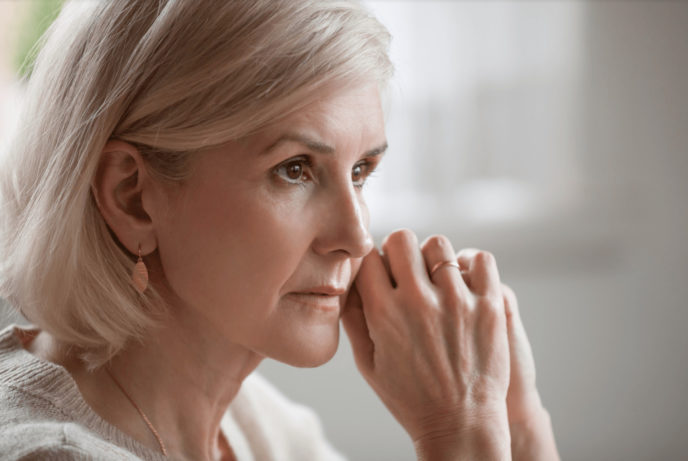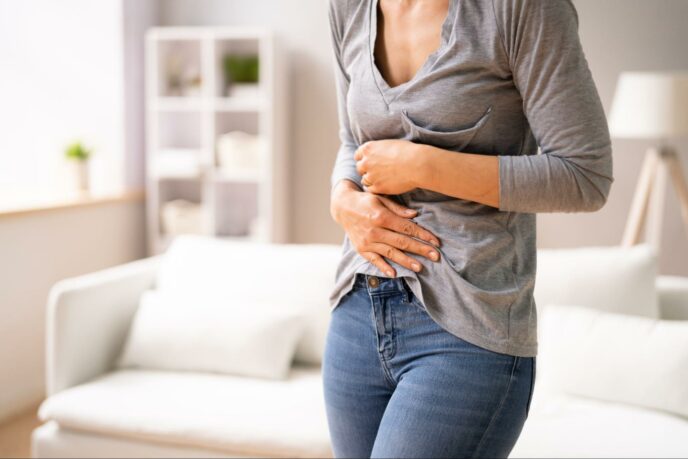
How Large Can Uterine Fibroids Grow

While most uterine fibroids (noncancerous tumors) are small and cause no symptoms, some people experience heavy menstrual bleeding, pelvic pressure, or problems with urination or bowel movements due to large fibroids. The specialists at American Fibroid Centers can perform a treatment called uterine fibroid embolization (UFE) to reduce the size of the fibroids and provide pain relief.
So, how large can uterine fibroids, or leiomyomas, grow? The answer varies based on several factors. Women living near Queens, Fishkill, Harlem, Brooklyn, West Orange, NJ, or Cincinnati, OH can call for a uterine fibroid assessment and learn about our minimally invasive treatment.
Where do fibroids grow?
Doctors categorize fibroids based on where they grow. Fibroids develop in many areas – in the wall of the uterus, outside the uterine wall, just beneath the uterine lining, or attached to the uterine wall by a stalk. They can grow as a single noncancerous tumor or in many clusters. Women are unaware of where their fibroids are located until they undergo an imaging exam like an MRI.
What factors influence fibroid growth?
Leiomyomas grow in response to the hormone estrogen. As estrogen levels rise during a woman’s childbearing years, fibroids may form, or existing ones could grow. Once a woman reaches menopause, estrogen levels naturally decline, and fibroids may stop growing or shrink in size.
African-American women are more likely to get fibroids than women of other races and ethnicities. Being overweight or obese can contribute to the development of fibroids. Vitamin D deficiency, high blood pressure, and other health conditions also play a role in fibroid growth – but the exact link is not always clear.
How large can fibroids grow?
Leiomyomas are classified into categories based on size:
- Small (less than 5 cm in diameter)
- Medium (5 to 10 cm in diameter)
- Large (10 cm in diameter or more)
Uterine fibroids range in size from small (such as a pea or cherry) to large (like grapefruit or a cantaloupe). The vast majority of fibroids are small, measuring less than 5 cm in diameter. These generally do not require treatment. However, medium-to-large fibroids can cause heavy menstrual bleeding, pelvic pressure and pain, difficulty emptying the bladder, and constipation.
Determining the size of your fibroids
The best way to determine the location and size of your fibroids is to undergo an MRI. American Fibroid Centers offers this imaging exam for women near Queens, Fishkill, Harlem, Brooklyn, West Orange, NJ, and Cincinnati, OH.
MRIs provide clear pictures of the uterus and any leiomyomas present. Based on the results of your MRI, our experienced team can develop a treatment plan to shrink the fibroids and provide pain relief.
What happens during uterine fibroid embolization?
UFE is growing in popularity as an advanced treatment for symptomatic fibroids. The procedure is performed in-office and does not require a lengthy hospital stay. American Fibroid Centers begins by numbing the treatment area and inserting a small catheter into the artery that leads to the uterus. Our specialists then deliver tiny particles to the leiomyomas, cutting off their blood supply. A reduction in symptoms occurs once the fibroids have shrunk.
Find relief from large fibroids
Small and large uterine fibroids alike can cause painful and unwanted symptoms. Those who experience heavy menstrual bleeding, pelvic pain, or urinary difficulties can call American Fibroid Centers to schedule a fibroid assessment. Our staff has extensive experience in performing UFE and providing pain relief. We frequently help women living in the areas of Queens, Fishkill, Harlem, Brooklyn, West Orange, NJ, and Cincinnati, OH.
Related Blogs & Videos
Learn more about vascular health, prevention, and care for Peripheral Arterial Disease.





